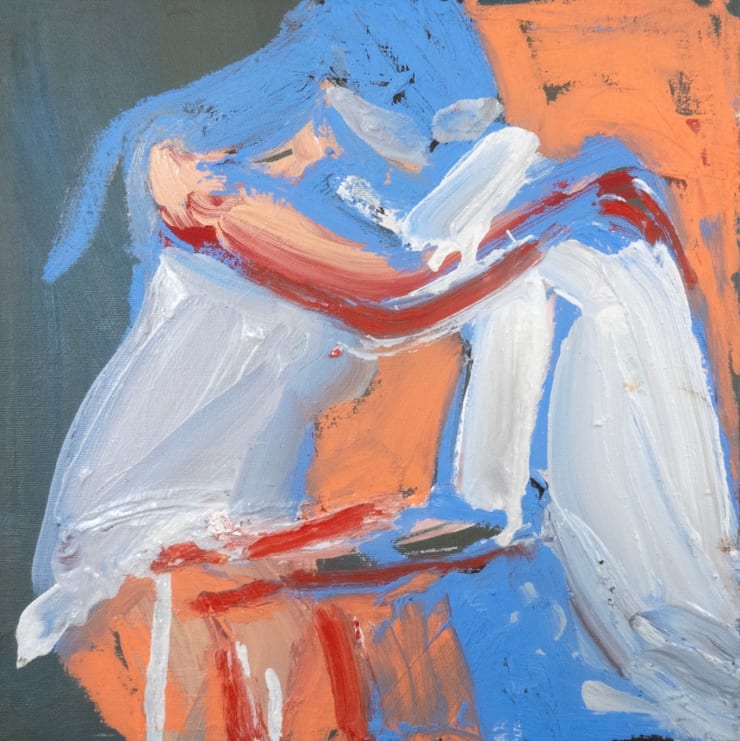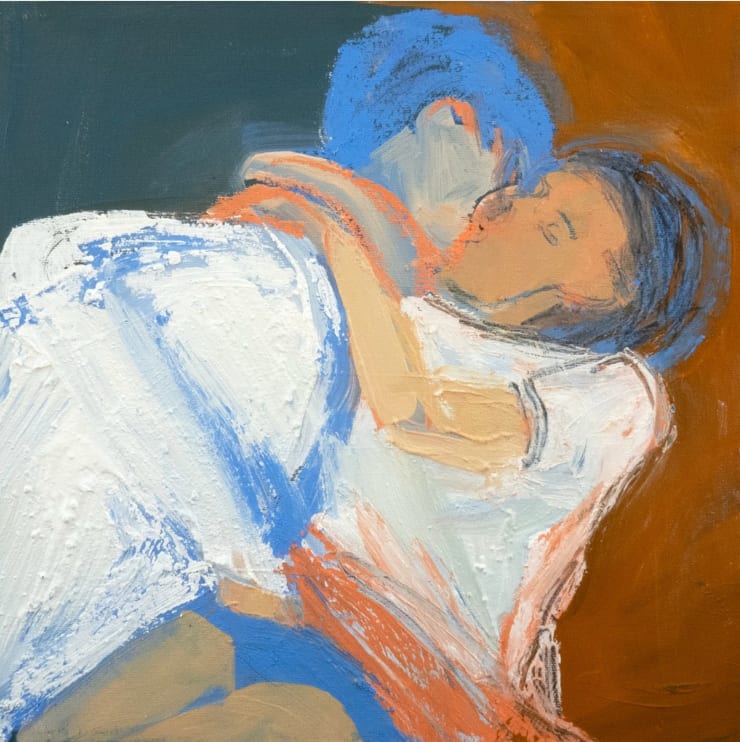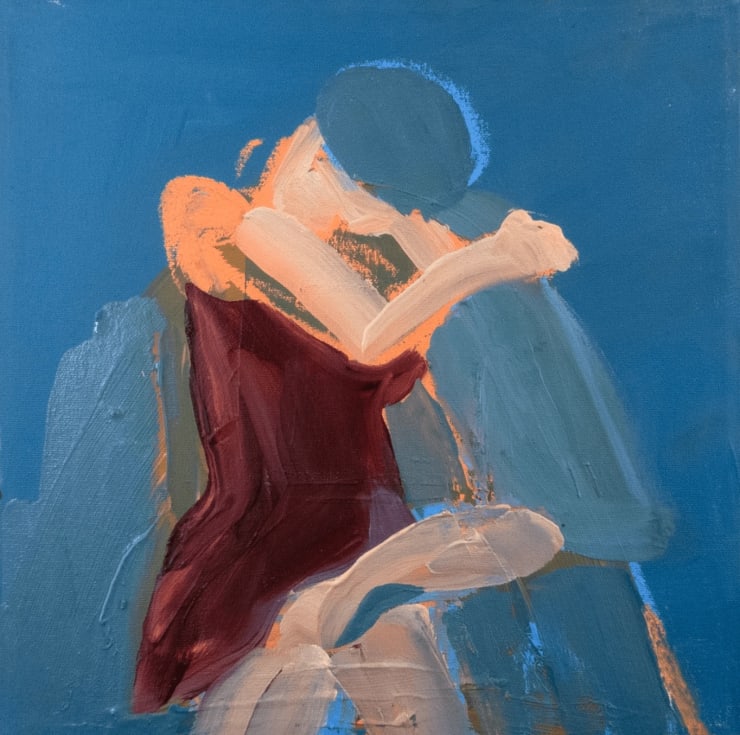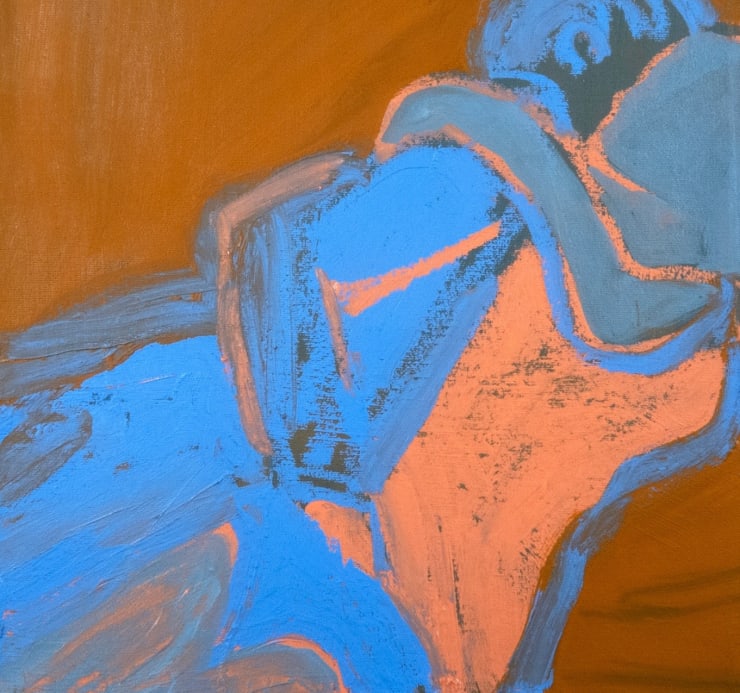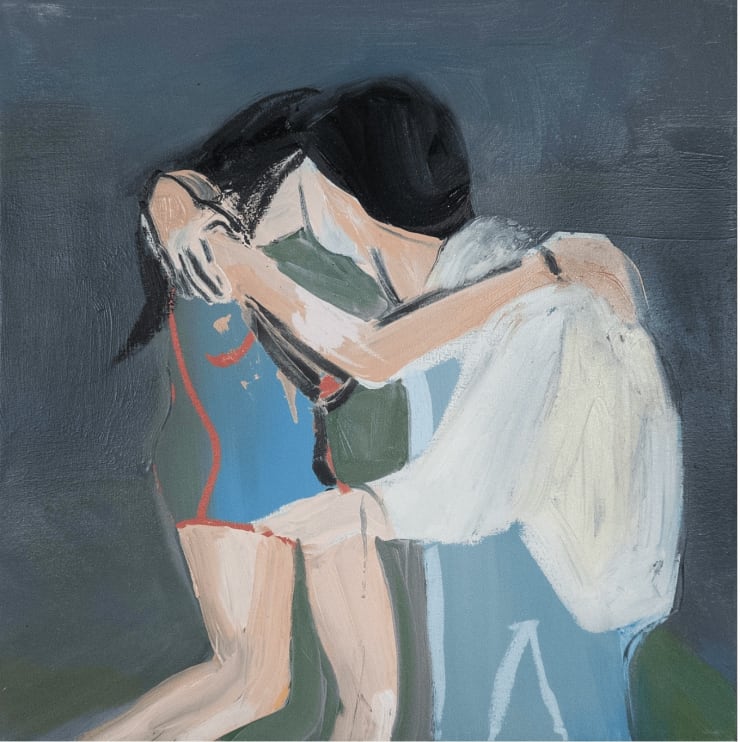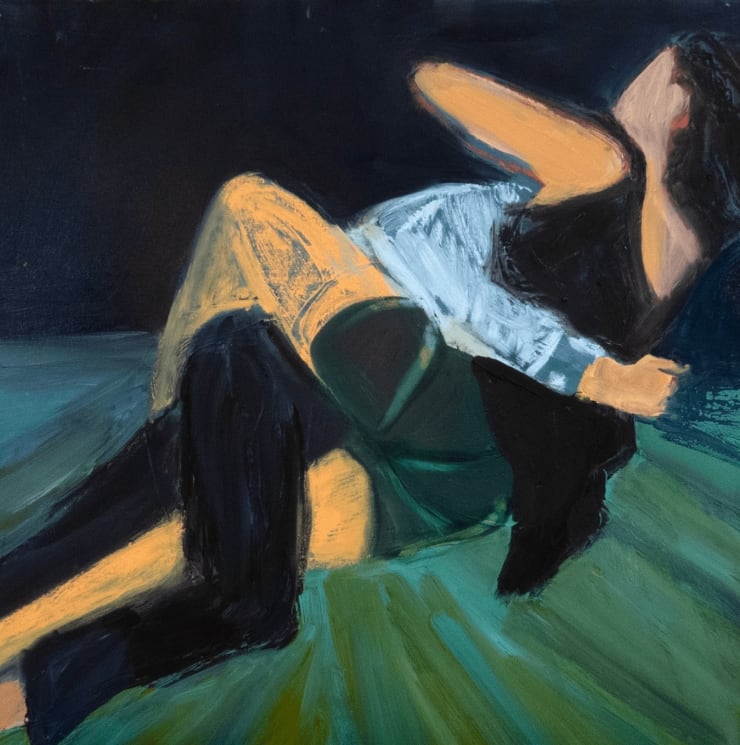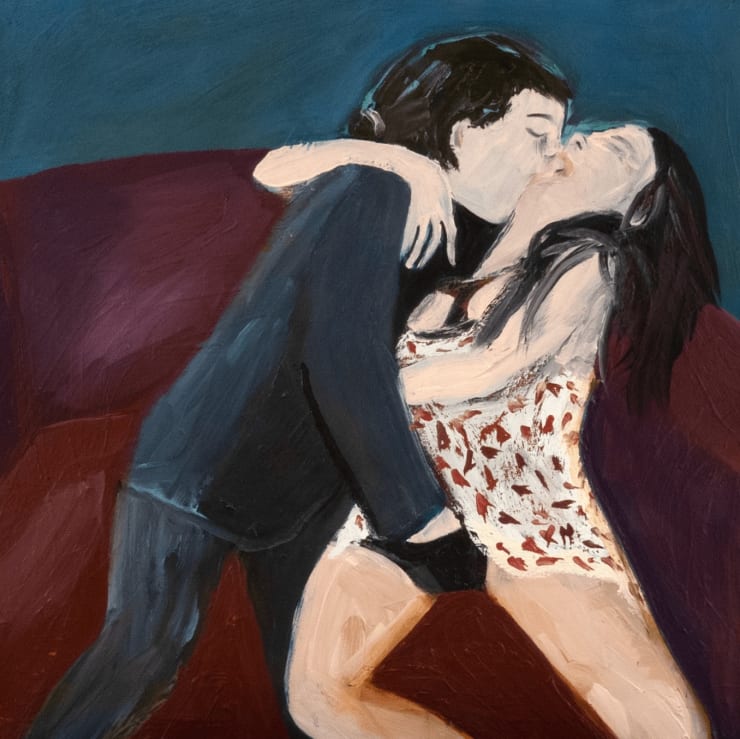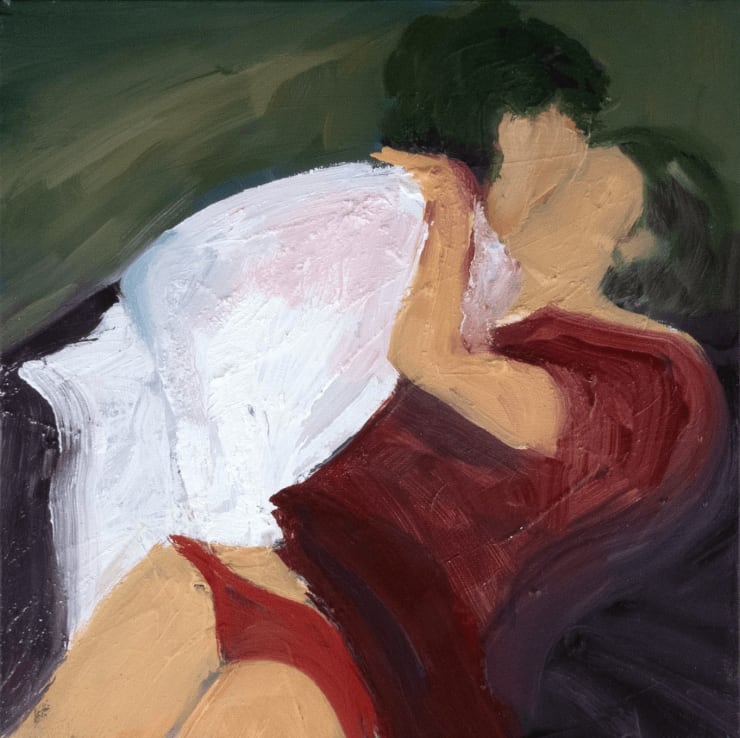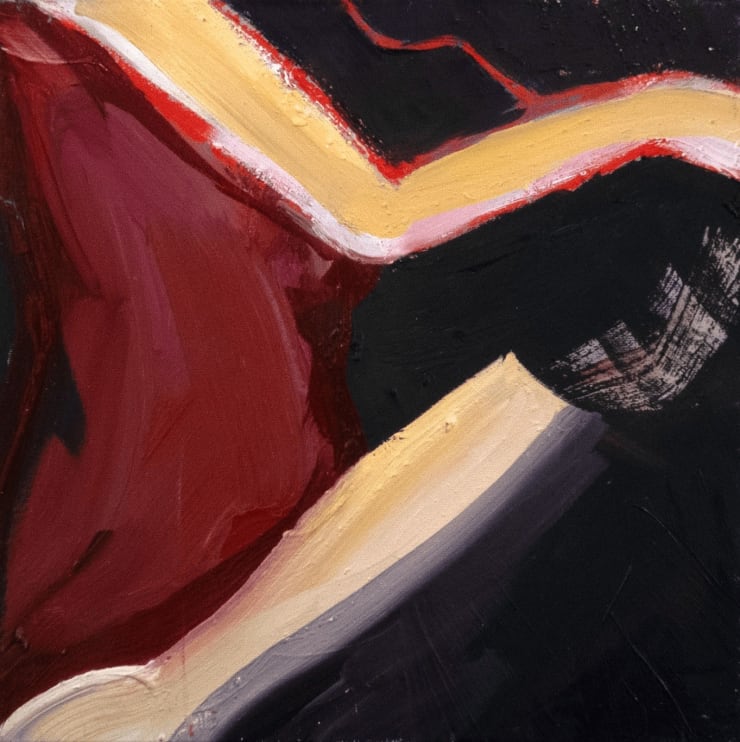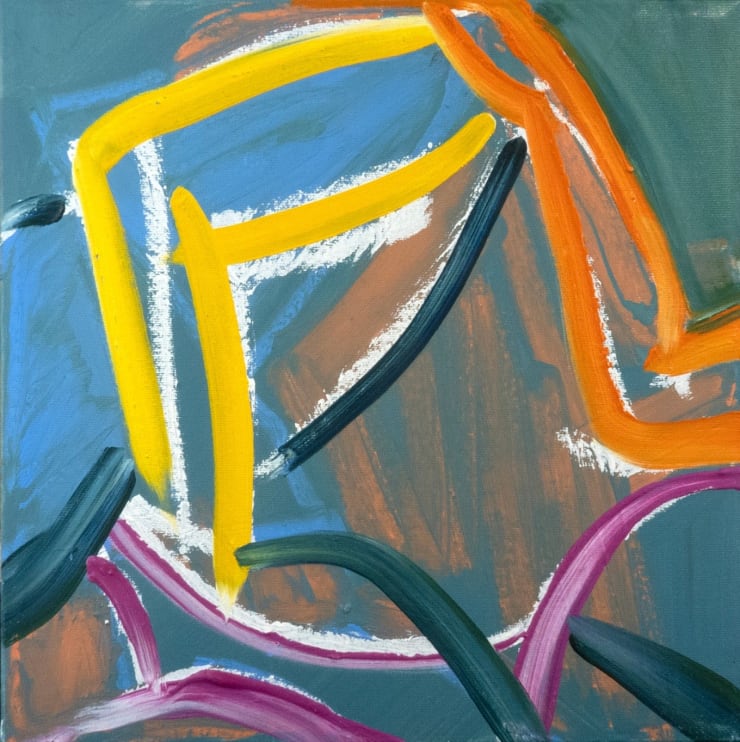Claudia Doring Baez: The Ecstasy and the Agony: Claudia Baez Ruminates on Bob Carlos Clarke
In a compelling new body of work, acclaimed painter Claudia Doring Baez embarks on a deeply personal and evocative conversation with the provocative photography of Bob Carlos Clarke, creating a series of expressionistic oil paintings that reinterpret his 1994 Public School Balls photographs through a distinctly feminine, emotional, and painterly lens.
Titled The Ecstasy and the Agony: Claudia Baez Ruminates on Bob Carlos Clarke, this exhibition finds Baez transforming Clarke’s stark black-and-white documentary images—originally published in the 2018 book The Agony and The Ecstasy—into richly colored, emotionally charged canvases that pulse with sensuality, introspection, and the complexities of memory. Where Clarke captured the raw immediacy of adolescent passion with voyeuristic precision, Baez brings nuance, abstraction, and a sense of poetic reclamation.
"For me, everything in those images I never had," Baez shares. Her visceral response to Clarke’s book was immediate and electric, stirring memories of her own youth in Mexico under the strict eye of a patriarchal father. A formative moment—a dance party in 1975 when she was just fifteen—became a defining trauma, as a fleeting moment of teenage closeness with a boyfriend was met with public punishment. This personal history becomes the emotional undercurrent of the series, as Baez reimagines the untaken paths and denied possibilities of her adolescence.
Baez’s paintings are both a homage and a re-visioning. She absorbs Clarke’s images and re-expresses them through expressive brushwork, gestural mark-making, and a vibrant palette of reds, blues, and flesh tones. Her figures often dissolve into one another, creating compositions that echo both physical intimacy and emotional entanglement, while inviting comparisons to Gustav Klimt and German Expressionism. Through her brush, moments of voyeuristic spectacle are softened and re-centered through an interior lens.
The series titles, including She Doesn’t Want To and What Could Have Been, deepen the viewer’s understanding of the psychological and autobiographical dimension of Baez’s project. These works are not only painterly interpretations but also deeply felt meditations on agency, freedom, repression, and the transformative power of art.
Carlos Clarke once described the teenagers in his photographs as participants in “a rite of passage from innocence to experience”—a concept Baez seizes and reframes. From her vantage point, the photographs become raw source material for reimagining alternative histories: worlds in which teenage girls can dance freely, unjudged and unpunished; moments where intimacy is claimed rather than denied. Through this process, Baez offers a powerful feminist counter-narrative to Clarke’s original male gaze.
For SALES & PRESS enquiries
Please email us here or get in touch on WhatsApp.
-
 M, Bob Carlos Clarke, 2024Oil and oil stick on canvas30.5 x 30.5 cm
M, Bob Carlos Clarke, 2024Oil and oil stick on canvas30.5 x 30.5 cm
12 x 12 in -
 She Doesn't Want To, 2024Oil and oil stick on canvas61 x 61 cm
She Doesn't Want To, 2024Oil and oil stick on canvas61 x 61 cm
24 x 24 in -
 She Doesn't Want To - A, Bob Carlos Clarke, 2024Oil and oil stick on canvas30.5 x 30.5 cm
She Doesn't Want To - A, Bob Carlos Clarke, 2024Oil and oil stick on canvas30.5 x 30.5 cm
12 x 12 in -
 She Doesn't Want To - G, Bob Carlos Clarke, 2024Oil and oil stick on canvas30.5 x 30.5 cm
She Doesn't Want To - G, Bob Carlos Clarke, 2024Oil and oil stick on canvas30.5 x 30.5 cm
12 x 12 in -
 She Doesn't Want To - H, Bob Carlos Clarke, 2024Oil and oil stick on canvas30.5 x 30.5 cm
She Doesn't Want To - H, Bob Carlos Clarke, 2024Oil and oil stick on canvas30.5 x 30.5 cm
12 x 12 in -
 She Doesn't Want To - J, Bob Carlos Clarke, 2024Oil and oil stick on canvas30.5 x 30.5 cm
She Doesn't Want To - J, Bob Carlos Clarke, 2024Oil and oil stick on canvas30.5 x 30.5 cm
12 x 12 in -
 She Doesn't Want To V, Bob Carlos Clarke, 2024Oil and oil stick on canvas61 x 61 cm
She Doesn't Want To V, Bob Carlos Clarke, 2024Oil and oil stick on canvas61 x 61 cm
24 x 24 in -
 She Doesn't Want To VIII, Bob Carlos Clarke, 2024Oil and oil stick on canvas61 x 61 cm
She Doesn't Want To VIII, Bob Carlos Clarke, 2024Oil and oil stick on canvas61 x 61 cm
24 x 24 in -
 The Agony and The Ecstasy, 2024Oil and oil stick on canvas61 x 61 cm
The Agony and The Ecstasy, 2024Oil and oil stick on canvas61 x 61 cm
24 x 24 in -
 The Agony and The Ecstasy, 2024Oil and oil stick on canvas61 x 61 cm
The Agony and The Ecstasy, 2024Oil and oil stick on canvas61 x 61 cm
24 x 24 in -
 The Agony and The Ecstasy III, Bob Carlos Clarke, Long Island, 2024Oil and oil stick on canvas61 x 61 cm
The Agony and The Ecstasy III, Bob Carlos Clarke, Long Island, 2024Oil and oil stick on canvas61 x 61 cm
24 x 24 in -
 The Agony and The Ecstasy IX, Bob Carlos Clarke (London photo), Long Island, 2024Oil and oil stick on canvas61 x 61 cm
The Agony and The Ecstasy IX, Bob Carlos Clarke (London photo), Long Island, 2024Oil and oil stick on canvas61 x 61 cm
24 x 24 in -
 The Agony and The Ecstasy or She Doesn't Want To VII, 2024Oil and oil stick on canvas61 x 61 cm
The Agony and The Ecstasy or She Doesn't Want To VII, 2024Oil and oil stick on canvas61 x 61 cm
24 x 24 in -
 The Agony and The Ecstasy VI, Bob Carlos Clarke, 2024Oil and oil stick on canvas61 x 61 cm
The Agony and The Ecstasy VI, Bob Carlos Clarke, 2024Oil and oil stick on canvas61 x 61 cm
24 x 24 in -
 What Could Have Been, 2024Oil and oil stick on canvas61 x 61 cm
What Could Have Been, 2024Oil and oil stick on canvas61 x 61 cm
24 x 24 in -
 What Could Have Been - B, Bob Carlos Clarke, 2024Oil and oil stick on canvas30.5 x 30.5 cm
What Could Have Been - B, Bob Carlos Clarke, 2024Oil and oil stick on canvas30.5 x 30.5 cm
12 x 12 in -
 What Could Have Been - N, Bob Carlos Clarke, 2024Oil and oil stick on canvas30.5 x 30.5 cm
What Could Have Been - N, Bob Carlos Clarke, 2024Oil and oil stick on canvas30.5 x 30.5 cm
12 x 12 in -
 What Could Have Been - O, Bob Carlos Clarke, 2024Oil and oil stick on canvas30.5 x 30.5 cm
What Could Have Been - O, Bob Carlos Clarke, 2024Oil and oil stick on canvas30.5 x 30.5 cm
12 x 12 in -
 What Could Have Been I, Bob Carlos Clarke, 2024Oil and oil stick on canvas61 x 61 cm
What Could Have Been I, Bob Carlos Clarke, 2024Oil and oil stick on canvas61 x 61 cm
24 x 24 in

